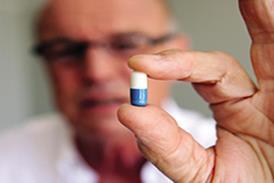We need our medical leaders to direct their energy and enthusiasm into better engagement and driving improvement, say Vijaya Nath and John Clark.
In the UK, as in many other countries, doctors must be more involved in leadership if improvements in access, quality, safety and productivity are to be realised.
Doctors have always been involved in running health services. However, the past 25 years or so in the NHS have been characterised by general management, with doctors in leadership roles only supporting, rather than leading, management initiatives.
This is beginning to change. Then health minister Lord Darzi’s 2008 review of the health system in England, High Quality Care for All, strongly advocated the importance of clinicians, and particularly doctors, being more engaged in leading service improvement.
The terms clinical or medical engagement are often used, but rarely defined. Few health systems or organisations have strategies for increasing engagement.
Medical engagement should be about changing the culture of a practice, department, service, hospital or system, so that doctors are actively involved in management and leadership, and executives genuinely encourage doctors to lead improvement initiatives. Essentially, it is about getting doctors to become more like shareholders than stakeholders.
Last year, the King’s Fund’s commission on leadership and management in the NHS stressed the importance of a “distributed” style of leadership, with management shared between managers and clinicians and equally valued by both.
Our follow-up review this year will explore how to promote “engaging leadership” – by which we mean a style of leadership that promotes engagement within teams, organisations and across the system to drive improvement.
Quality and productivity
What is the evidence that greater medical engagement will guarantee improvements in quality and productivity? Peter Spurgeon, John Clark and Chris Ham provide compelling evidence from the UK and US in Enhancing Engagement in Medical Leadership: from the dark side to centre stage.
Another study, published last year by Jonathan Taitz and colleagues, also concluded that some high performing hospitals in the US have significantly improved quality and safety by engaging their physicians.
There are a growing number of medical engagement exemplars internationally. For example, at the McLeod Regional Medical Centre in South Carolina, winner of the McKesson Quest for Quality Prize in 2010, engaging medical staff has been a key feature of their change programme, which is based on a “physician-led, data-driven and evidence-based” culture.
As part of this year’s leadership review, the King’s Fund aims to identify further exemplars to help clinical commissioning groups, hospitals and health systems develop more effective medical engagement and leadership strategies.
During our programmes and interventions with doctors we have observed effective medical leadership and identified the challenges for doctors moving into leadership roles. For example, effective leaders foster multiprofessional relationships and exert influence beyond their professional boundaries; they support, empower and motivate colleagues; they are humble, trustworthy and resilient.
Leaders are frank about the challenges of adapting their behaviour, recognising, for example, that the methodical approach to recognising patterns, vital to making a clinical diagnosis, can also be a barrier to innovation and risk-taking. Increasingly, the medical profession is recognising that competence in management, leadership and service improvement is integral to being a good doctor at all levels.
Undergraduate and postgraduate curriculums and work experience, particularly in the UK, now incorporate leadership competencies, with many other countries adopting similar approaches, often based on the joint NHS Institute and Academy of Medical Royal Colleges medical leadership competency framework.
Professional attitudes
Over the past few years, discussions with doctors have highlighted the importance of “medical professionalism” as a platform from which doctors could “shape healthcare and exercise constructive influence on health policy”.
Doctors revealed that some expectations of them as undergraduates followed them throughout their career; these were based on assumptions that sometimes placed barriers in the way of them developing as leaders. For example, doctors are sometimes assumed to be capable of becoming managers or leaders with no preparation, because they were “bright”.
Doctors moving into leadership roles need to be afforded the same development opportunities as their management counterparts in the areas of self-awareness, communicating with and leading others, understanding their impact on others, working within teams and understanding systems and processes in the context of the NHS.
By looking at the evidence – which points to leaders at all levels being most engaged when applying the skills, knowledge and behaviours in their own settings – we have learnt that the most effective approach is to provide opportunities for doctors to apply the theory of clinical leadership through actively leading service improvements.
This applies equally across the range of clinicians we work with, from GPs to secondary care consultant specialists, from clinical fellows to medical directors.
Leaders of the organisations who collaborated in a series of roadshows targeted at medical students urged us to “find ways to utilise the energy and enthusiasm of those who within a short time will be the custodians of medical care and moderators of its delivery”. This should be a call to action for all involved in developing and supporting medical leaders.



























No comments yet